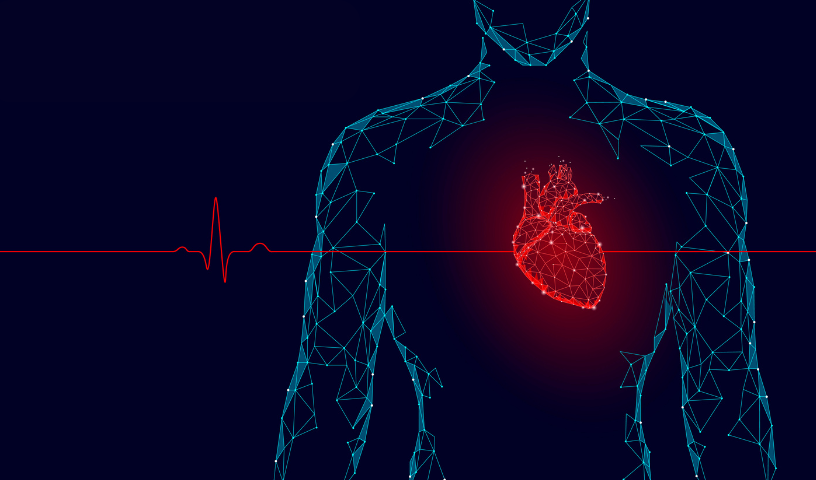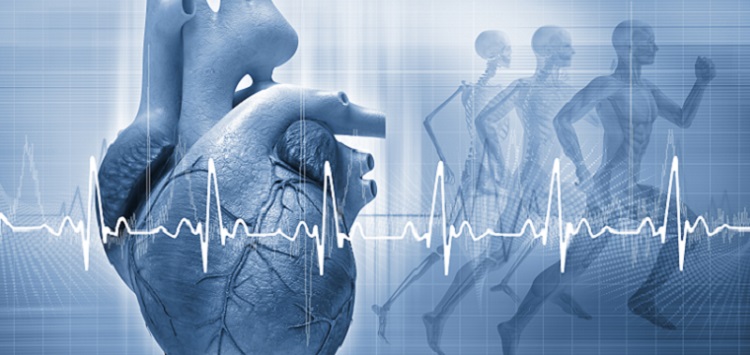Recognizing the Value of Cardiology in Modern Health Care Providers
Cardiology plays an important function in modern-day medical care, particularly as heart disease proceeds to be the leading root cause of death worldwide. Advances in diagnostics and therapy have changed patient treatment, allowing earlier treatments and enhanced results. The change in the direction of preventative cardiology encourages individuals to handle their health and wellness proactively. As innovation remains to develop, the assimilation of ingenious services might additionally redefine cardiology's effect on public health, motivating a more detailed assessment of emerging patterns and their effects.
The Frequency of Cardiovascular Disease and Its Influence On Public Health
Although heart condition remains the leading cause of fatality globally, its effect prolongs far beyond individual clients to impact public health and wellness systems and economies. The high prevalence of cardiovascular disease places a significant stress on health care resources, necessitating raised funding for rehabilitation, treatment, and prevention programs. Public health initiatives must deal with threat variables such as weight problems, cigarette smoking, and sedentary way of lives, which add substantially to the climbing occurrence of heart conditions.Moreover, the economic burden connected with cardiovascular disease is immense, including not only direct clinical costs yet also indirect expenditures associated with shed productivity and premature death. Neighborhoods encounter obstacles in taking care of these costs, often causing variations in health care accessibility and end results. As the populace ages and lifestyle-related risks remain to escalate, the necessity for effective cardiology interventions becomes vital. Addressing heart condition is not only a matter of individual health and wellness yet additionally a vital public health priority.
Developments in Heart Diagnostics and Imaging Techniques
Recent advancements in heart diagnostics and imaging strategies have changed the area of cardiology, improving the ability to discover and check heart diseases. Strategies such as cardiac MRI, CT angiography, and echocardiography have become increasingly innovative, offering comprehensive photos of cardiac frameworks and functions. These modalities enable for the very early identification of problems like coronary artery condition, cardiac arrest, and valvular disorders.Moreover, innovations in non-invasive diagnostics, such as wearable innovation and remote surveillance gadgets, have encouraged patients and medical care service providers. These devices promote real-time monitoring of heart rhythms and other crucial signs, causing timely treatments. In addition, expert system is being integrated right into imaging evaluation, boosting precision and effectiveness in diagnosis.
Developments in Treatment Options for Heart Conditions
Recent advancements in cardiology have actually caused substantial technologies in treatment choices for heart conditions. These include sophisticated medical strategies that improve procedural results and emerging drugs that offer brand-new opportunities for treatment. As the field develops, these technologies play a vital role in improving client care and outcomes.
Advanced Surgical Techniques
Innovations in surgical strategies have actually transformed the landscape of cardiology, using brand-new hope for patients with heart conditions. Minimally invasive treatments, such as catheter-based interventions, have significantly reduced healing times and health center stays. Methods like robotic-assisted surgical procedure improve accuracy, allowing surgeons to navigate complicated anatomical structures with greater precision. Innovations in imaging innovation promote real-time visualization throughout procedures, enhancing end results. Transcatheter aortic valve substitute (TAVR) exhibits an advancement in treating aortic constriction, allowing valve substitute without open-heart surgical procedure. Additionally, hybrid techniques that integrate surgical and catheter-based techniques offer tailored solutions for numerous cardiac concerns. These advanced medical techniques not just boost patient security but also increase treatment alternatives, underscoring the essential function of development in modern cardiology practices.
Arising Medicines and Treatments
As the landscape of cardiology remains to progress, emerging treatments and drugs play a pivotal function in boosting treatment options for heart disease. Advancements such as novel anticoagulants and progressed lipid-lowering representatives have actually changed the monitoring of cardiovascular illness, considerably lowering person morbidity and mortality. Additionally, the growth of genetics therapies and regenerative medication supplies appealing methods for dealing with conditions formerly regarded permanent. Professional tests are continually disclosing the efficiency of these therapies, pushing the borders of standard treatments. Furthermore, the integration of electronic health technologies facilitates personalized medicine, permitting for tailored therapy strategies based upon hereditary and lifestyle aspects. Jointly, these innovations highlight the dynamic nature of cardiology, boosting client outcomes and redefining standards of treatment in contemporary medical care.
The Duty of Preventive Cardiology in Person Care
Precautionary cardiology plays a crucial function in client treatment by concentrating on the identification of danger aspects that add to cardiovascular disease. Via way of living modification techniques and very early detection techniques, medical care service providers can effectively reduce the occurrence of cardiovascular occasions - Cardiology. This proactive approach not just enhances client end results but likewise promotes long-term health and wellness
Danger Factor Recognition
While cardiovascular illness continue to be a leading reason for morbidity and death worldwide, reliable danger element recognition offers as a foundation of preventative cardiology. Recognizing threat factors such as high blood pressure, family, hyperlipidemia, and diabetes mellitus background is vital for early treatment. Health care experts make use of different evaluating approaches to review these factors, enabling tailored precautionary actions. Additionally, recognizing a patient's way of living choices, such as cigarette smoking and physical inactivity, even more informs threat analyses. This thorough analysis enables medical professionals to develop personalized treatment strategies focused on mitigating dangers. By focusing on danger variable identification, medical care systems can boost individual results and decrease the general problem of heart diseases, inevitably contributing to improved public health methods and source appropriation.
Way Of Living Adjustment Methods
A wide variety of researches highlights the crucial duty of way of life modification methods in reducing cardiovascular condition risk. These approaches incorporate dietary changes, increased physical activity, cigarette smoking cessation, and weight management. By adopting a heart-healthy diet rich in fruits, vegetables, whole grains, and lean proteins, people can decrease cholesterol levels and high blood pressure. Regular physical task strengthens the heart and boosts total cardio health and wellness. Additionally, stopping smoking considerably lowers the threat of cardiovascular disease and boosts recovery rates for those with status quo. Weight monitoring better contributes to cardio wellness by alleviating various other danger factors such as diabetic issues and hypertension. Implementing these way of living changes not only advertises specific wellness but likewise acts as a keystone of preventive cardiology in patient treatment.
Early Detection Techniques
Lifestyle adjustments considerably add to decreasing cardio disease dangers, however they are most reliable when coupled with very early detection strategies. Preventative cardiology emphasizes the importance of determining potential heart problems prior to they intensify right into serious conditions. Methods such as blood pressure tracking, cholesterol testing, and progressed imaging technologies like echocardiograms play critical roles in evaluating cardiovascular health and wellness. Biomarkers and hereditary testing additionally enhance the precision of very early detection, permitting for tailored precautionary techniques. Regular cardiac threat analyses empower doctor to intervene proactively, potentially avoiding cardiovascular disease and strokes (Cardiology). By integrating these early discovery methods into regular care, patients can gain from timely way of living interventions and targeted treatments, inevitably enhancing and improving outcomes high quality of life
Integrating Innovation Into Cardiology Practices
As innovations in modern technology remain to improve numerous fields, the integration of cutting-edge devices and systems into cardiology techniques has ended up being necessary for enhancing patient care and outcomes. Telemedicine systems permit cardiologists to keep an eye on people from another location, enhancing accessibility to care while decreasing the burden on health care facilities. Wearable page tools, such as smartwatches, allow continuous heart price tracking, signaling both doctors and people to prospective problems in real-time. Furthermore, synthetic intelligence (AI) is being used to assess vast quantities of cardiac data, helping in early medical diagnosis and customized therapy strategies. Advanced imaging strategies, consisting of 3D echocardiography, boost visualization of heart frameworks, leading to a lot more specific interventions. Electronic health and wellness records (EHRs) enhance patient details administration, ensuring that cardiologists have immediate access to essential information. With each other, these technological developments are transforming cardiology, advertising aggressive administration and enhanced health outcomes for patients with cardiovascular problems.
The Importance of Individual Education And Learning and Engagement
Individual education and learning and engagement play a pivotal role in the management of cardiovascular health and wellness. By outfitting clients with understanding regarding their problems, treatment choices, and lifestyle changes, doctor empower individuals to take an energetic role in their care. This proactive technique can bring about boosted adherence to prescribed drugs, dietary changes, and workout routines, eventually lowering the risk of complications.Engagement also promotes a solid patient-provider partnership, urging open communication and count on. When patients really feel educated and involved, they are most likely to voice worries and ask concerns, which can result in much better scientific end results. Additionally, educational resources, such as workshops or electronic systems, can improve understanding and advertise self-management strategies. On the whole, prioritizing individual education and involvement is vital for boosting cardiovascular wellness, enhancing lifestyle, and minimizing healthcare costs connected with heart diseases.
Future Trends in Cardiology and Their Prospective Influence

Regularly Asked Concerns
What Way Of Living Adjustments Can Reduce Heart Problem Risk?
The current inquiry addresses way of life adjustments that can considerably lower heart problem risk. Cardiology Jupiter. Taking on a well balanced diet regimen, participating in routine exercise, preserving a healthy and balanced weight, handling tension, and staying clear of tobacco can especially enhance cardiovascular health
Exactly How Can I Identify Very Early Indicators of Heart Issues?
Identifying early indications of heart problems entails surveillance signs such as chest discomfort, lack of breath, fatigue, and irregular heartbeat. Prompt recognition of these indicators can motivate required medical examination and intervention for far better outcomes.
What Are the Distinctions In Between Cardiologists and Cardiac Surgeons?
The differences between cardiologists and heart surgeons hinge on their roles; cardiologists mainly identify and manage heart problems with non-invasive approaches, while cardiac cosmetic surgeons carry out surgical treatments to correct architectural heart issues. Each plays a vital, distinct role.

How Frequently Should I Get My Heart Health And Wellness Checked?
The frequency of heart health and wellness checks varies based upon individual risk factors. Usually, grownups need to undergo examinations each to two years, while those with status quo might require more frequent evaluations as suggested by healthcare specialists.
What Role Does Genes Play in Heart Problem Danger?
Genetics greatly affects heart condition risk, with familial patterns indicating inherited problems. Particular genes can incline individuals to hypertension, cholesterol problems, and other cardio problems, highlighting the relevance of genetic screening in assessing heart health and wellness. click over here now Heart illness stays the leading reason of death internationally, its effect prolongs much beyond private clients to influence public health and wellness systems and economies. Public health and wellness initiatives should deal with danger factors such as obesity, smoking, and less active way of livings, which add considerably to the rising incidence of heart conditions.Moreover, the financial burden connected with heart disease is enormous, including not only direct medical expenses but likewise indirect expenditures related to lost efficiency and early death. Preventive cardiology plays a vital role in patient care by concentrating on the recognition of threat elements that contribute to heart illness. Fabricated knowledge (AI) and equipment discovering are boosting diagnostics and person surveillance, making it possible for early discovery of heart diseases. The distinctions between cardiologists and cardiac cosmetic surgeons lie in their functions; cardiologists largely take care of and diagnose heart conditions with non-invasive approaches, while cardiac cosmetic surgeons do medical treatments to fix architectural heart concerns.